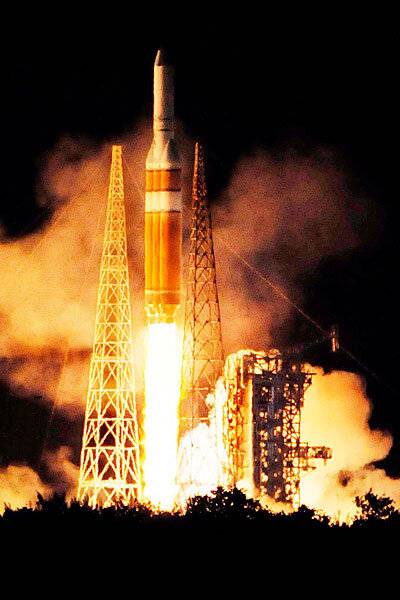World's biggest spy satellite: The newest 'ear' in space?
Loading...
A huge unmanned rocket carrying a secret new spy satellite for the United States roared into space Sunday (Nov. 21) to deliver what one reconnaissance official has touted as "the largest satellite in the world" into orbit.
The giant booster – a Delta 4 Heavy rocket – blasted off at 5:58 p.m. EST (2258 GMT) from the Cape Canaveral Air Force Base in Florida carrying a classified payload for the U.S. National Reconnaissance Office.
"This mission helps to ensure that vital NRO resources will continue to bolster our national defense," said Air Force Brig. Gen. Ed Wilson, commander 45th Space Wing, after the successful launch.
IN PICTURES: Orbiting the Earth
The satellite, called NROL-32, launched after a series of delays from technical glitches. The most recent glitch, a pair of faulty temperature sensors, thwarted a Nov. 19 launch attempt.
The exact purpose of the new spy satellite NROL-32 is secret, but is widely believed to be an eavesdropping satelllite.
"I believe the payload is the fifth in the series of what we call Mentor spacecraft, a.k.a. Advanced Orion, which gather signals intelligence from inclined geosynchronous orbits. They are among the largest satellites ever deployed," said Ted Molczan, a respected sky-watcher who keeps tabs on orbiting spacecraft.
One NRO official has hinted at the huge size of the reconnaissance spacecraft.
In a Sept. 13 address at the Air Force Association's Air and Space Conference, NRO director Bruce Carlson, a retired Air Force general, told an audience that this Delta 4 Heavy rocket would launch "with the largest satellite in the world on it."
For comparison, in July 2009 a satellite called TerreStar-1 – touted as the world's largest commercial satellite ever built – launched into space atop an Ariane 5 rocket. TerreStar-1 is 15,233 pounds (6,910 kg) satellite equipped with a huge 60-foot (18-meter) antenna.
The Delta 4 Heavy rocket is the United States' biggest unmanned rocket currently in service and has 2 millions pounds of thrust, making it the most powerful liquid fueled booster available today. A Delta 4 Heavy rocket stands 235 feet (72 meters) tall and is actually made up of three boosters, each called a Common Booster Core, arranged in a line to give it a three-column appearance.
The rocket is built and launched by the United Launch Alliance, a partnership between Lockheed Martin and Boeing. It made its first flight in 2004 and is capable of launching payloads of up to 24 tons into low-Earth orbit and 11 tons toward the geosynchronous orbits used by communications satellites.
Tonight's launch marked the fourth launch of a Delta 4 Heavy rocket and the second satellite launch in as many months for the NRO. An Atlas 5 rocket launched the NROL-41 reconnaissance satellite on Sept. 20.
In his address last month, Carlson said that the current plan for NRO satellite missions "is the most aggressive launch campaign that the National Reconnaissance Office has had in 20 years, almost a quarter of a century."
Carlson went on to say that new satellites are vital for NRO's mission and to replace older satellites before they fail.
"The other thing I can tell you is these are very important, because they all go to update a constellation which is aging rapidly," Carlson said last month according to an NRO transcript. "We bought most of our satellites for three, five, or eight years, and we're keeping them on orbit for ten, twelve, and up to twenty years."
"Now when I buy something people complain about how expensive it is, but nobody ever complains when it's time to die and it keeps right on ticking," Carlson added. "Some of these guys are like the Energizer bunny and they have really done marvelous work."





